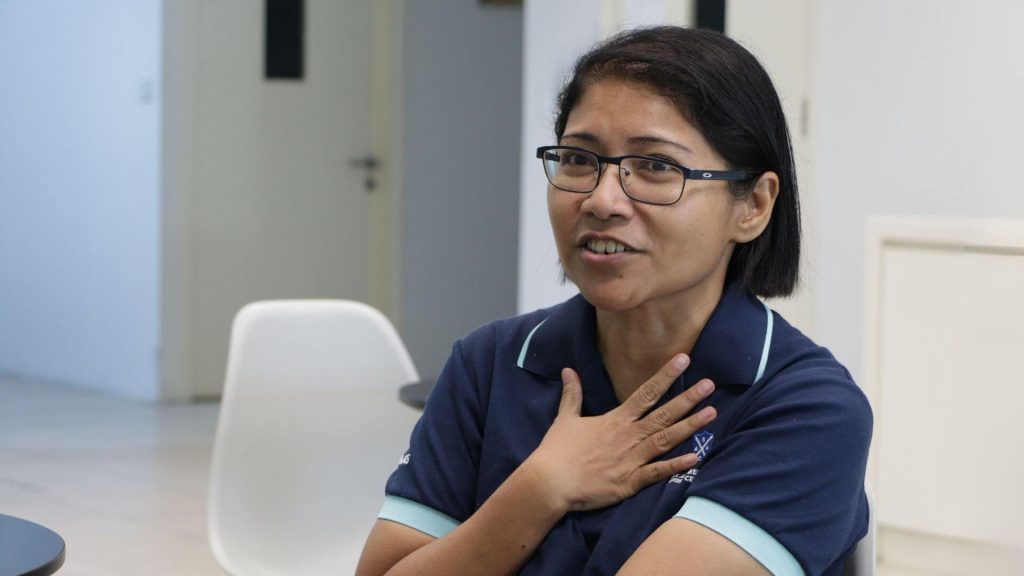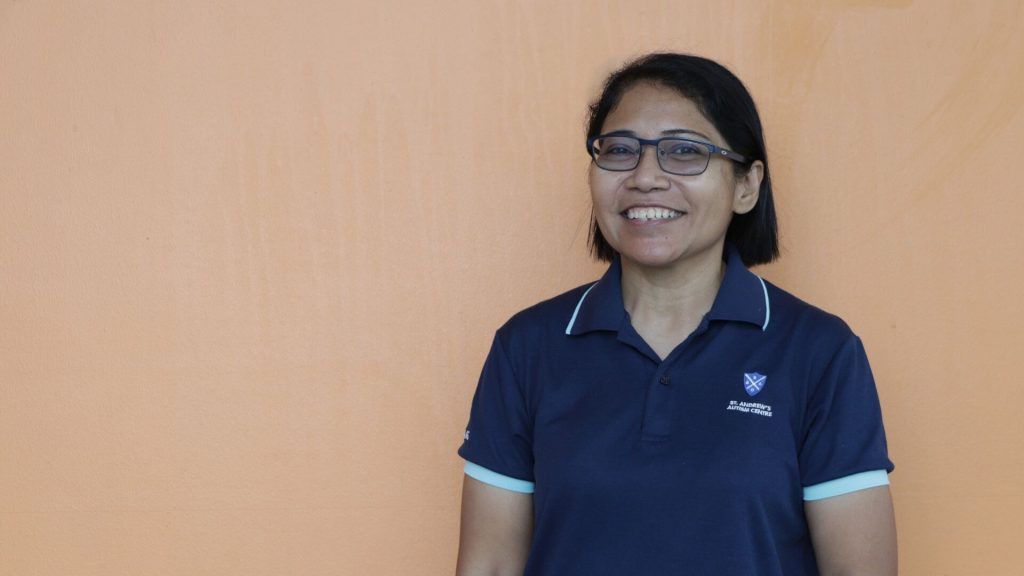Siti Nor Aisyah Binte Sarip, who joined St. Andrew’s Autism Centre (SAAC) in 2005 as a teacher/therapist, remembers how she was struck by the team’s tenacious spirit. “We had to overcome various difficulties when we started. For one, there were only 12 of us trying to get a school up and running,” she admits.
Among the most pressing was space – the lack of it, rather. Then, SAAC was using a ward room on level 10 of St. Andrew’s Community Hospital (SACH) in Simei. But, as Siti points out, “When there’s a will, there’s a way.”
Quickly, everyone got down to work. The team managed to carve out three classrooms and a group activity area, hence allowing classes to commence.

Siti had worked with youths and adults with autism spectrum disorders before joining SAAC.
“The world for people with autism can be relatively limited; they may not have many options, opportunities and support. These are gaps I observed and wanted to help fill,” she says.
“I deeply resonated with SAAC’s call to ‘serve others the way God would want him/her to be served’. It offers people with autism a safe space apart from home to learn, interact and grow. And as a teacher here, I can help our students and clients to live a meaningful and dignified life.”
Some days can be especially challenging. We met at 10am (half an hour later than scheduled) on a Wednesday for this meeting because Siti and two other colleagues were trying to calm down a student. He turned up in school anxious and angry because his parents had forgotten his school bag and drove home for it. “His behaviour may be due to the disruption in his morning routine,” she explains.
Several years ago, Siti and her colleagues had to search for a missing student too. When a parent called to say that her child had not returned home after school, the teachers launched a search party immediately. They finally found him at 10pm, after a six-hour hunt in the neighbourhood.
“The family had moved house recently but this student was not prepared for this change. After staying there for a few weeks, he decided to go back to the old house. So, one day, after classes had ended, he tried to do just that. But he couldn’t find his way; the more he tried to navigate, the more lost he became,” says Siti.
“After we found him, he kept saying, ‘go home’. So we replied, ‘yes, your home is at ABC’. But he became upset, insisting that ‘no, my home is in XYZ’. We spoke to his parents, and realised that he wasn’t prepared for the move. Perhaps he’d thought this house was temporary.”
“As incidents like this show, changes are difficult for people with autism,” she adds. “It is therefore important to have changes clearly explained clearly and early to them.”
Now a lead teacher at St. Andrew’s Autism School (SAAS), Siti is working hard to enrich the curriculum for students. She spends a lot of time studying latest research and practices, and tries to adapt or incorporate these into her pedagogy.
This passion for learning led her to leave SAAC in 2015 – she wanted to “see how other people did the same things” – but subsequently returned in 2019. The stint, she says, strengthened her resolve as a teacher and inspired new ideas to increase student engagement. Siti was instrumental in introducing class collaborations into the curriculum, where students of different abilities and interests are grouped together for an activity. It allows them to model and learn from one another.
“To plan, design and implement effective programmes and activities for people with autism, we must take into consideration their learning profile, such as their strengths, weaknesses and interests,” she says. “All this will indicate what quality of life is to the student and his/her family, and allows us to support them in this journey.”








